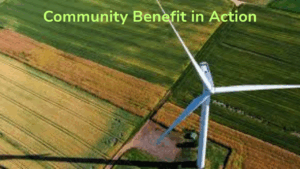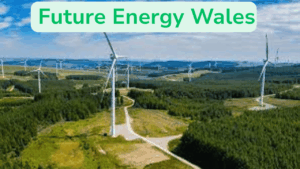In today’s world, energy is one of the most pressing issues for governments, industries, and individuals. As climate change continues to pose a global challenge, the demand for sustainable energy solutions has grown significantly. Terms like green energy, renewable energy, and clean energy are often used interchangeably, but they are not exactly the same. Each has distinct characteristics, sources, and implications for the environment. Understanding the difference between these concepts is crucial, especially for businesses, policymakers, and environmentally conscious individuals in the UK and beyond.

This article explores in detail the difference between green energy, renewable energy, and clean energy, shedding light on how they contribute to sustainability, their benefits, and their role in shaping the future of global energy.
What is Green Energy?
Green energy refers to energy that comes from natural sources that have the least negative impact on the environment. The key feature of green energy is its ability to generate power without causing harm to ecosystems, releasing toxic pollutants, or significantly contributing to climate change.

Green energy typically includes:
- Solar energy – harnessing power from the sun.
- Wind energy – capturing wind power to generate electricity.
- Hydropower – generating electricity from flowing water (when done in environmentally safe ways).
- Biomass – energy from organic materials, provided it is managed sustainably.

The primary goal of green energy is to protect the environment. While all green energy is renewable, not all renewable energy can be considered completely green. For example, biomass is renewable, but if forests are cut down irresponsibly to produce it, the process may not be considered green.
Green energy is essential for reducing the carbon footprint, ensuring energy security, and promoting sustainable development. In the UK, initiatives such as solar farms and offshore wind projects are prime examples of green energy investments that benefit both people and the planet.

What is Renewable Energy?
Renewable energy is energy that comes from sources that naturally replenish themselves. Unlike fossil fuels such as coal, oil, or natural gas, renewable sources are virtually inexhaustible, at least on a human timescale.
Renewable energy includes:

- Solar power – sunlight is abundant and replenishes daily.
- Wind power – wind currents continue to flow regardless of human usage.
- Hydroelectric power – rivers and water cycles constantly renew.
- Geothermal energy – heat from the Earth’s core is continuously available.
- Biomass energy – organic matter like wood, crops, and waste regenerates naturally.
The defining feature of renewable energy is its infinite availability compared to fossil fuels. However, not all renewable sources are fully eco-friendly. For example, large-scale hydroelectric dams are renewable but can cause habitat destruction, displacement of communities, and ecological imbalance. In the UK, renewable energy plays a central role in the government’s net zero by 2050 goal, with offshore wind farms being one of the largest contributors.
What is Clean Energy?
Clean energy refers to energy sources and technologies that produce minimal to zero greenhouse gas emissions. The term focuses primarily on reducing pollution and tackling climate change. Unlike green or renewable energy, which are defined by their source, clean energy is defined by its environmental impact.
Clean energy includes:
- Solar and wind power – no emissions during electricity generation.
- Hydropower – relatively low emissions if implemented sustainably.
- Nuclear energy – controversial but considered clean because it does not emit carbon dioxide during electricity production.
- Geothermal energy – very low emissions and highly efficient.
The unique factor here is that clean energy does not necessarily mean renewable. For example, nuclear power is not renewable because uranium is finite, but it is considered clean since it produces no direct carbon emissions. In the UK, nuclear power stations such as Hinkley Point are vital to the clean energy mix, ensuring consistent energy supply with low carbon emissions.
Key Differences Between Green, Renewable, and Clean Energy
While the three terms are often mixed up, here’s how they differ:
- Green energy is all about being eco-friendly and minimizing harm to the planet.
- Renewable energy focuses on sources that naturally replenish themselves.
- Clean energy is defined by its low or zero emissions, regardless of whether the source is renewable or not.
In short:
- All green energy is renewable and clean.
- All renewable energy may not always be green.
- All clean energy may not necessarily be renewable.
This distinction is important when evaluating energy policies and investments. For instance, nuclear energy is clean but not renewable. Biomass is renewable, but not always green. Offshore wind is renewable, green, and clean.
Why Do These Distinctions Matter in the UK?
In the UK, energy policy is at the centre of tackling climate change and ensuring economic growth. The government has committed to reaching net zero carbon emissions by 2050, and understanding the nuances between green, renewable, and clean energy helps create better strategies.
- Policy making – By identifying the differences, policymakers can encourage investment in truly sustainable sources instead of simply “renewable” options that may not be environmentally friendly.
- Public awareness – UK residents choosing green tariffs or eco-friendly home installations (like solar panels) benefit from knowing the difference between clean, renewable, and green energy.
- Business responsibility– Companies investing in sustainability need clarity on whether their energy choices align with green, clean, or renewable principles.
The Future of Energy in the UK
The UK is already a global leader in offshore wind and has made significant progress in reducing its dependence on fossil fuels. However, challenges remain in balancing energy security, cost, and environmental sustainability.
- Offshore wind is expected to remain the backbone of renewable and green energy in the UK.
- Solar energy will continue expanding, especially with government incentives and decreasing technology costs.
- Nuclear power will play a key role as a clean, low-carbon alternative, ensuring consistent supply.
- Emerging technologies such as tidal power and hydrogen fuel are likely to become more prominent, bridging gaps between renewable, clean, and green categories.
The UK’s energy transition will require a combination of all three, green, renewable, and clean energy sources. Together, they can help build a sustainable future that is both environmentally friendly and economically viable.
Conclusion
Although often used interchangeably, green energy, renewable energy, and clean energy represent different concepts within the sustainability landscape. Green energy emphasises environmental friendliness, renewable energy highlights naturally replenishing sources, and clean energy focuses on reducing harmful emissions.
For the UK, recognising these distinctions is critical for achieving climate goals, designing effective policies, and fostering innovation. By embracing the right balance of green, renewable, and clean energy, the nation can lead the world in sustainable practices, ensuring a healthier planet and a secure energy future.

